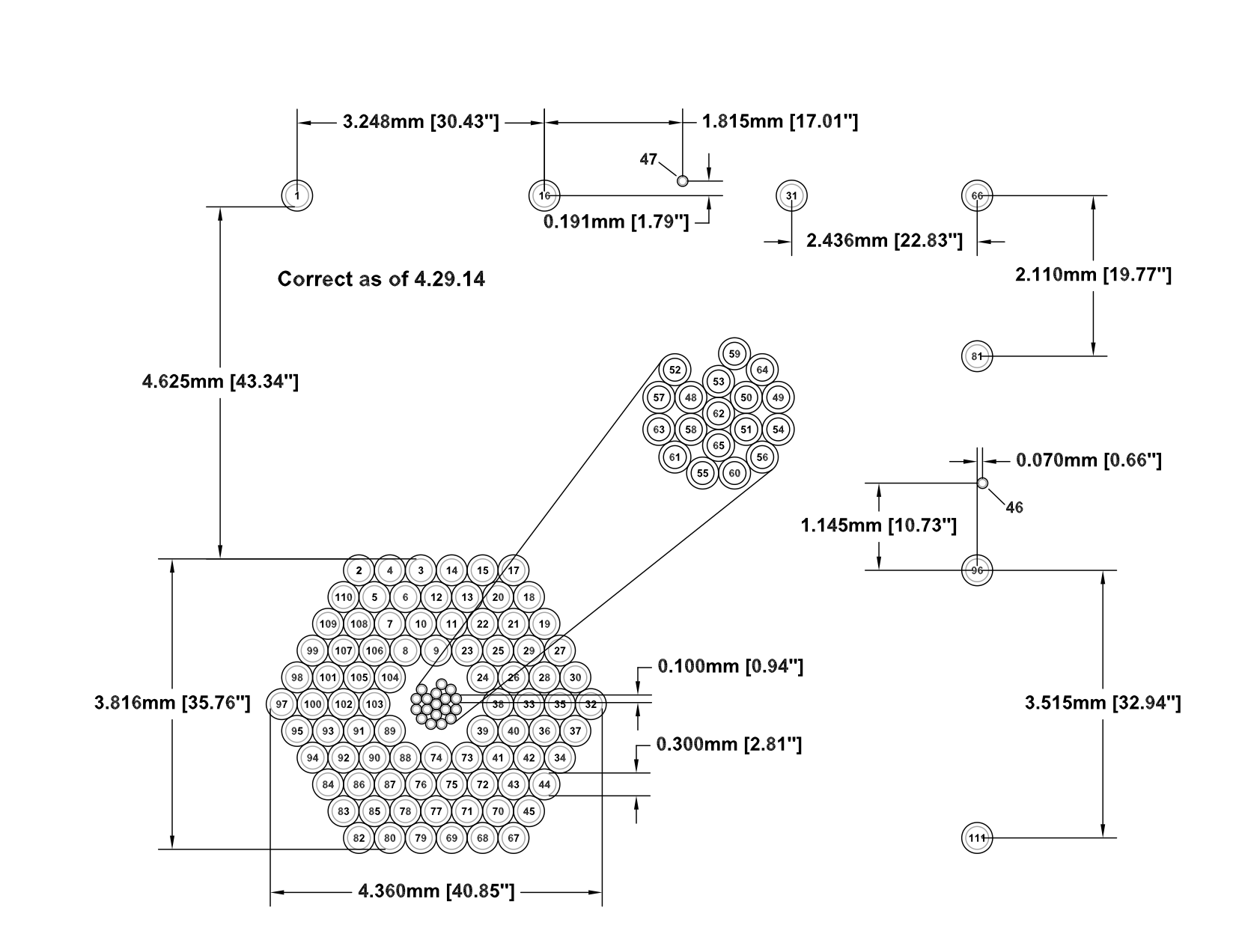 HexPak and GradPak
are two variable-pitch IFUs that merge into a single slit-mount
that feeds the WIYN Bench Spectrograph. Each IFU forms a separate (but
parallel) fiber pseudo-slit within the common mount. They are designed
for only one IFU to be used at a time, while the other is stowed with
a light-tight cap. Variabe pitch means that there are varying
fiber diameters bundled together in each IFU with different
spacing. These are the first variable pitch and first dual-slit IFUs
every built. Each fiber size has is own instrumental resolution and
grasp, with implications for observations and calibration,
discussed here, as well as data reduction (e.g., sky
subtraction), discussed here. Fiber sizes given in
arcsec below all adopt a focal-plane scale of 9.374 arcsec/mm.
HexPak and GradPak
are two variable-pitch IFUs that merge into a single slit-mount
that feeds the WIYN Bench Spectrograph. Each IFU forms a separate (but
parallel) fiber pseudo-slit within the common mount. They are designed
for only one IFU to be used at a time, while the other is stowed with
a light-tight cap. Variabe pitch means that there are varying
fiber diameters bundled together in each IFU with different
spacing. These are the first variable pitch and first dual-slit IFUs
every built. Each fiber size has is own instrumental resolution and
grasp, with implications for observations and calibration,
discussed here, as well as data reduction (e.g., sky
subtraction), discussed here. Fiber sizes given in
arcsec below all adopt a focal-plane scale of 9.374 arcsec/mm.
Some initial technical publications include
Wood et al. (2012),
Eigenbrot et al. (2012),
Hopper et
al. (2015). A forthcoming paper on GradPak will be available later
in 2016.
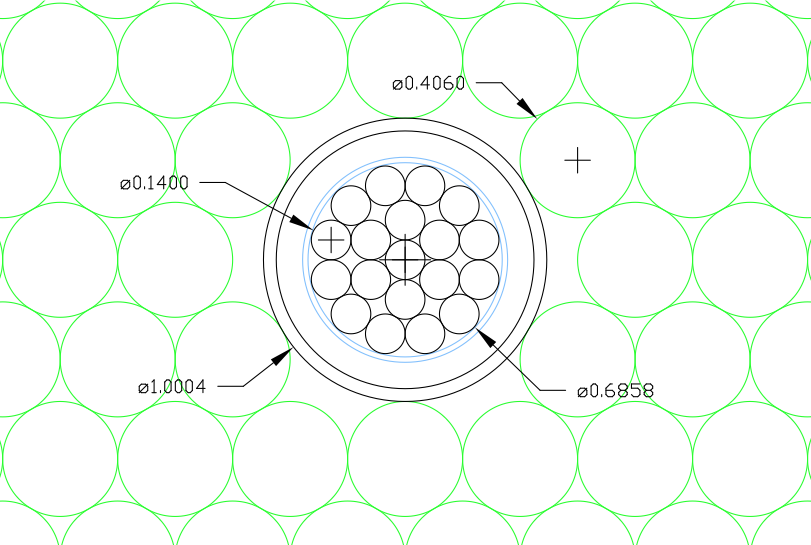
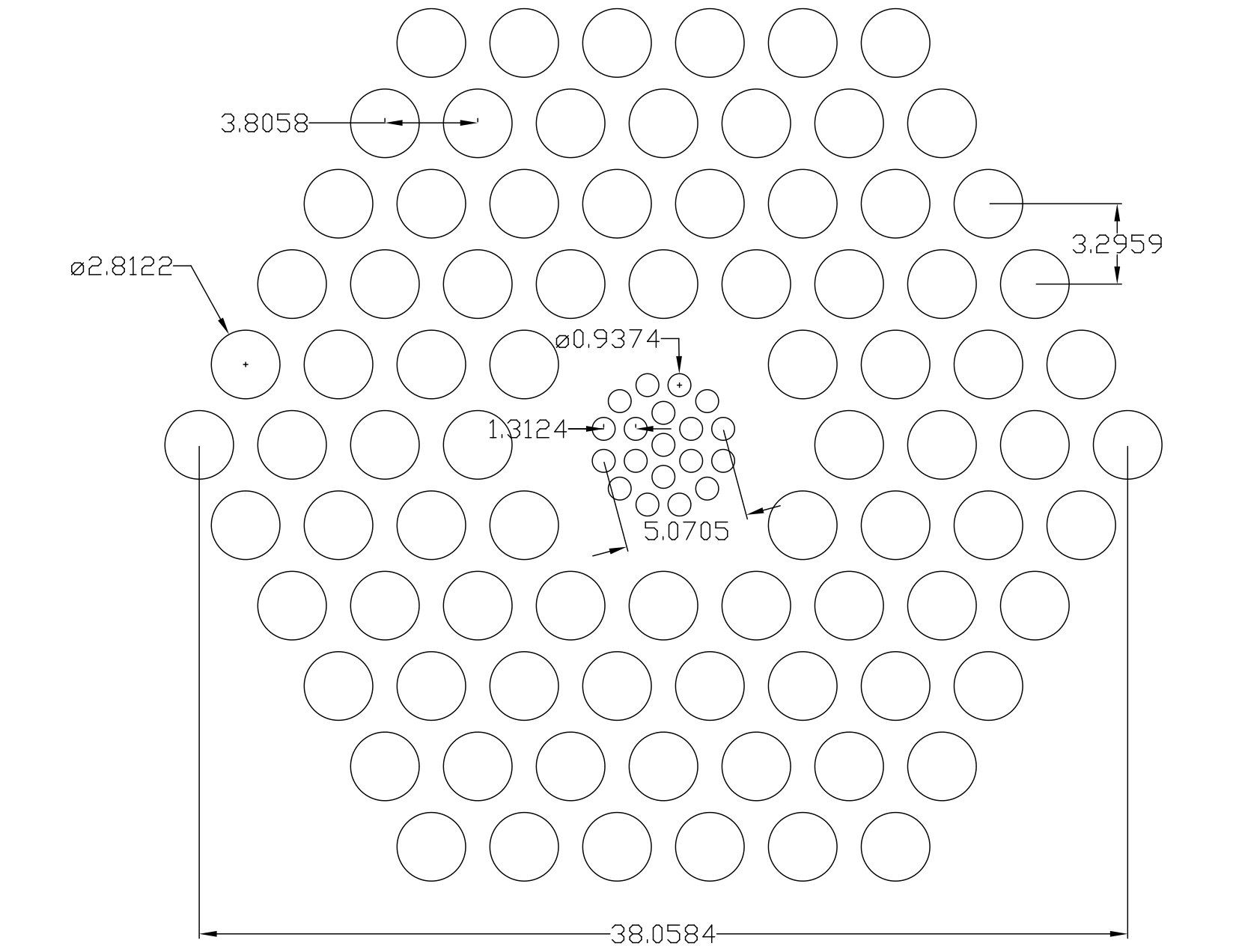 HexPak (astrometric map at left) is roughly a 41
x 36 arcsec hexagon of 3 arcsec fibers re-purposed from an earlier IFU
(DensePak) with a core of 18 1-arcsec fibers in three rings (one fiber
in this core broke during fabrication). The purpose of this IFU is to
map fairly axisymmetric (e.g., low inclination, low ellipticity)
extended objects where there is a premium for high angular and/or high
spectral resolution in a high-surface brightness core while at the
same time obtaining adequate signal in a lower surface-brightness
periphery. In particular, one of the issues this IFU attempts to
minimize is the beam-smearing problems inherent to large-fiber IFUs
such as SparsePak, while maintaining large grasp in faint, outer
regions. Sky fiber locations: There are 7 3-arcsec sky fibers
and 2 1-arcsec sky fibers spaced in an L-shaped perimeter (like
SparsePak) approximately 43 arcsec from the edge of the hexagon outer
edge, or about an arcmin from the hexagon center. Fiber sizes and
types: The exact fibers core sizes are 2.812 arcsec (300 microns)
and 0.937 arcsec (100 microns). The small fiber is Molex/Polymicro FBP
broad-spectrum fused silica with NA~0.22 and core:clad:buffer ratios
of 1:1.2:1.4. The larger fibers have uniform 406 micron outer
diameters (corresponding to a core-to-core spacing of 3.806 arcsec),
but the core material are of mixed provenance as inherited from
DensePak, which was believed to be a mix of "wet" and "dry" fibers
handed down from the ancient times of Nessie, and not unlike the Hydra
red and blue fibers. Some detailed maps of the hexagonal array and
core meterology are given in figures, above right.
HexPak (astrometric map at left) is roughly a 41
x 36 arcsec hexagon of 3 arcsec fibers re-purposed from an earlier IFU
(DensePak) with a core of 18 1-arcsec fibers in three rings (one fiber
in this core broke during fabrication). The purpose of this IFU is to
map fairly axisymmetric (e.g., low inclination, low ellipticity)
extended objects where there is a premium for high angular and/or high
spectral resolution in a high-surface brightness core while at the
same time obtaining adequate signal in a lower surface-brightness
periphery. In particular, one of the issues this IFU attempts to
minimize is the beam-smearing problems inherent to large-fiber IFUs
such as SparsePak, while maintaining large grasp in faint, outer
regions. Sky fiber locations: There are 7 3-arcsec sky fibers
and 2 1-arcsec sky fibers spaced in an L-shaped perimeter (like
SparsePak) approximately 43 arcsec from the edge of the hexagon outer
edge, or about an arcmin from the hexagon center. Fiber sizes and
types: The exact fibers core sizes are 2.812 arcsec (300 microns)
and 0.937 arcsec (100 microns). The small fiber is Molex/Polymicro FBP
broad-spectrum fused silica with NA~0.22 and core:clad:buffer ratios
of 1:1.2:1.4. The larger fibers have uniform 406 micron outer
diameters (corresponding to a core-to-core spacing of 3.806 arcsec),
but the core material are of mixed provenance as inherited from
DensePak, which was believed to be a mix of "wet" and "dry" fibers
handed down from the ancient times of Nessie, and not unlike the Hydra
red and blue fibers. Some detailed maps of the hexagonal array and
core meterology are given in figures, above right.
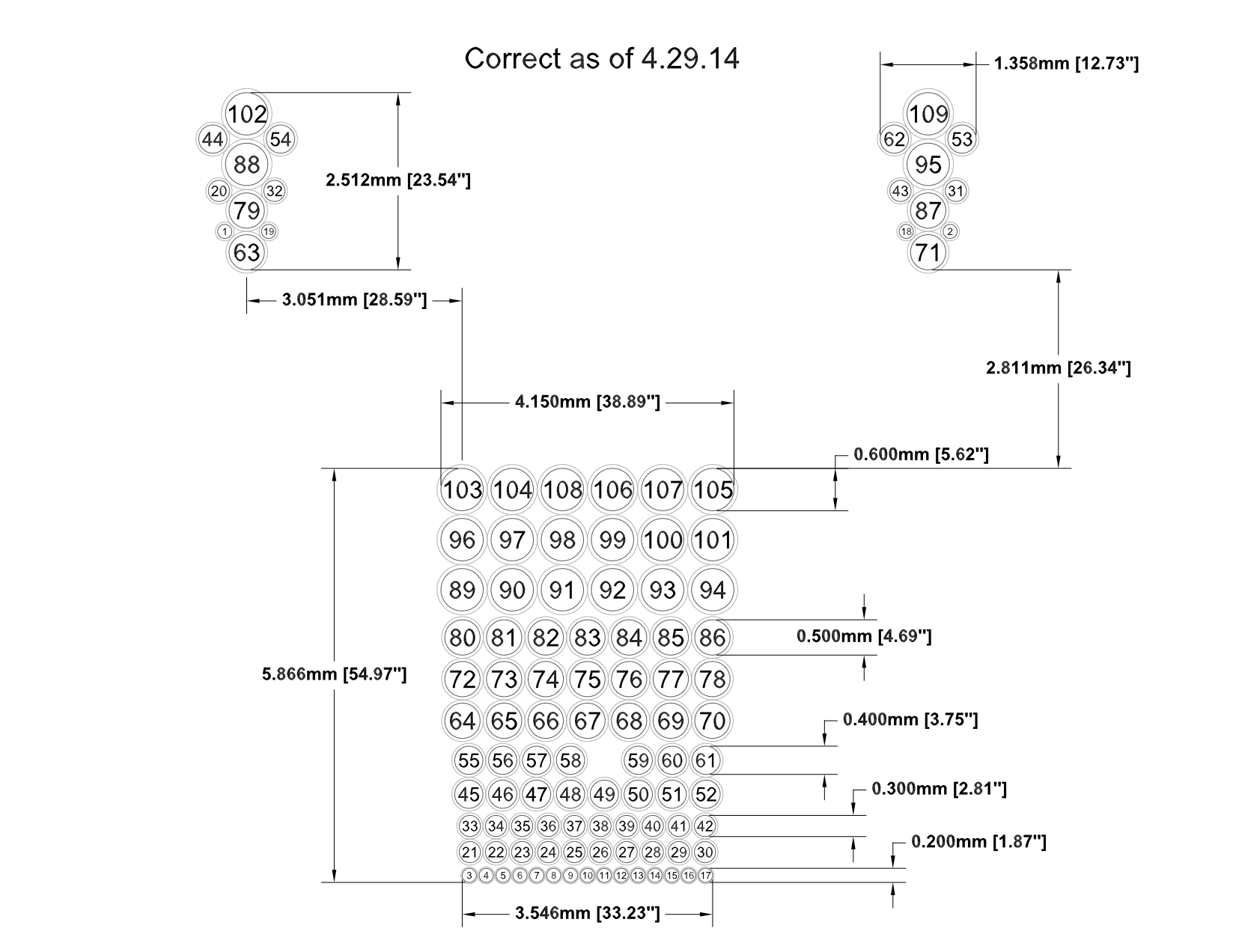
GradPak (astrometric map left) is roughly a 39 x 55 arcsec
rectangular array of 11 rows of fibers comprised of 5 different sizes
from 2 to 6 arcsec, in increments of 1 arcsec. The fiber size gets
progressively larger from one end of the array to the other. (One
4-arcsec fibers broke during assembly and polishing.) The
purpose of this IFU is to map vertical gradients in highly-inclined
spiral disks. Sky fiber locations: There are 4 sky fibers of
each size located in two groups separated by rougly 26 arcsec from one
edge of the array (where the fibers are largest), and from each other
by slightly over one arcmin. The detailed arrangement of the sky
fibers was driven by the need for a relatively simple packing
scheme. Fiber sizes and types: The exact fiber core sizes are
1.875 arcsec (200 microns, row 1), 2.812 arscec (300 microns, rows
2-3), 3.750 arcsec (400 microns, rows 4-5), 4.687 arscec (500 microns,
rows 6-8), 5.624 arcsec (600 microns, rows 9-11). All fibers are
Molex/Polymicro FBP broad-spectrum fused silica with NA~0.22. The
core:clad:buffer ratios are all rougly 1:1.1:1.2.
Slit design: The GradPak slit has fiber sorted by increasing
size, while the HexPak slit has the small fibers (centered in the IFU
hexagon) located also in the center of the slit. An actual image of
the slit is shown at above right, where both IFUs are
simultaneously illuminated. The fiber numbering in the maps indicate
the location in the slit. These are given in the two schematics shown
below,
although there are some inconsistencies in the numbering due to
the fact that there are a few broken fibers and the numbering in the
IFU plan has been forced to be consequitive. [TODO]
Sky-fiber locations: For GradPak there are 4 sky fibers for
every fiber size. They are mapped into the slit such that they bracket
and span the block of fibers of their corresponding size, spaced
uniformly along the block. This means that there are two sky fibers
adjacent to each other at the junction of every fiber-size block. For
HexPak, the seven sky fibers for the larger fibers are spaced in the
upper and lower blocks in the same was as for GradPak; they bracket
and uniformly span each block except...[CONFIRM. Also figure out
where small sky-fibers are.]
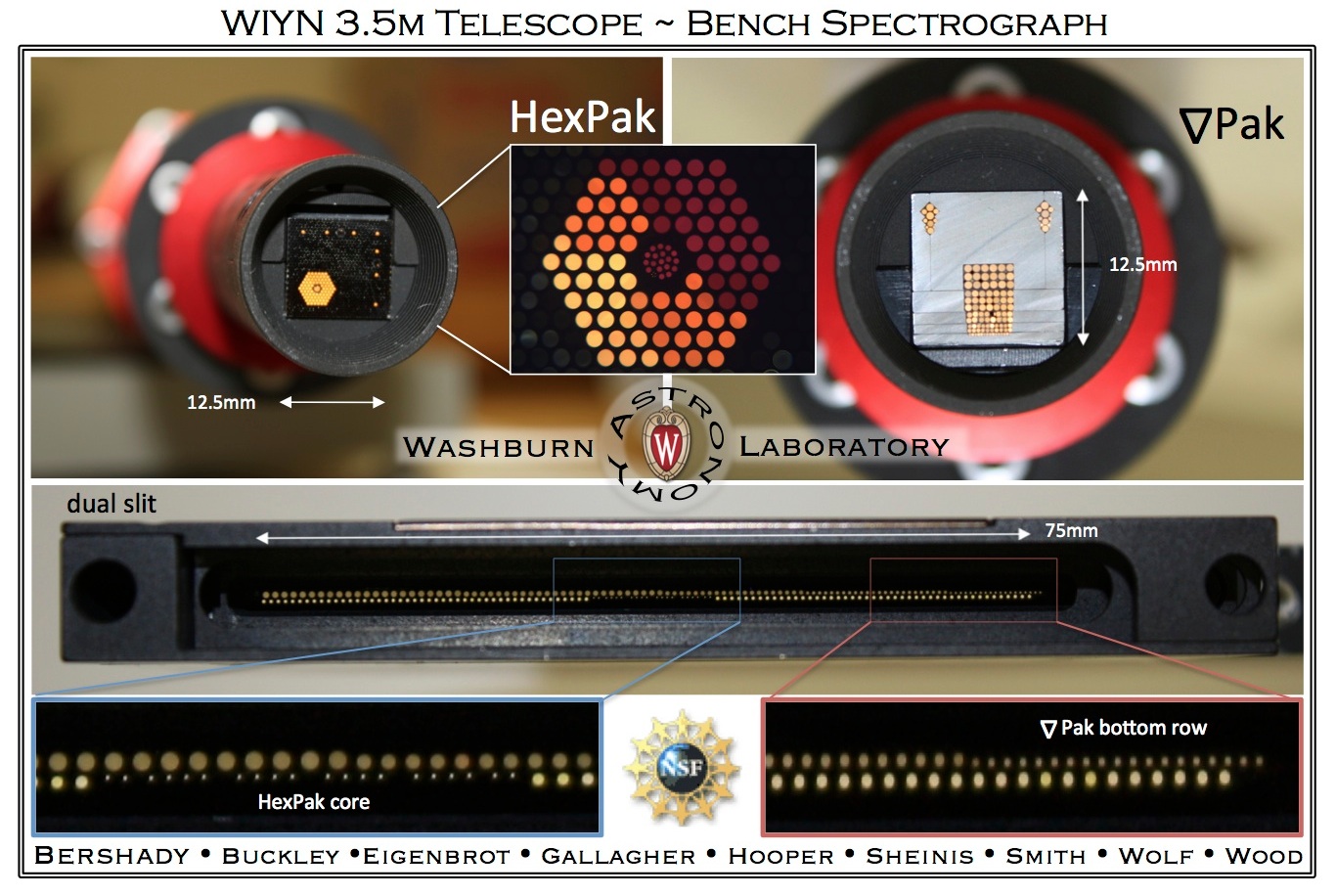


 HexPak and GradPak
are two variable-pitch IFUs that merge into a single slit-mount
that feeds the WIYN Bench Spectrograph. Each IFU forms a separate (but
parallel) fiber pseudo-slit within the common mount. They are designed
for only one IFU to be used at a time, while the other is stowed with
a light-tight cap. Variabe pitch means that there are varying
fiber diameters bundled together in each IFU with different
spacing. These are the first variable pitch and first dual-slit IFUs
every built. Each fiber size has is own instrumental resolution and
grasp, with implications for observations and calibration,
discussed here, as well as data reduction (e.g., sky
subtraction), discussed here. Fiber sizes given in
arcsec below all adopt a focal-plane scale of 9.374 arcsec/mm.
HexPak and GradPak
are two variable-pitch IFUs that merge into a single slit-mount
that feeds the WIYN Bench Spectrograph. Each IFU forms a separate (but
parallel) fiber pseudo-slit within the common mount. They are designed
for only one IFU to be used at a time, while the other is stowed with
a light-tight cap. Variabe pitch means that there are varying
fiber diameters bundled together in each IFU with different
spacing. These are the first variable pitch and first dual-slit IFUs
every built. Each fiber size has is own instrumental resolution and
grasp, with implications for observations and calibration,
discussed here, as well as data reduction (e.g., sky
subtraction), discussed here. Fiber sizes given in
arcsec below all adopt a focal-plane scale of 9.374 arcsec/mm. 


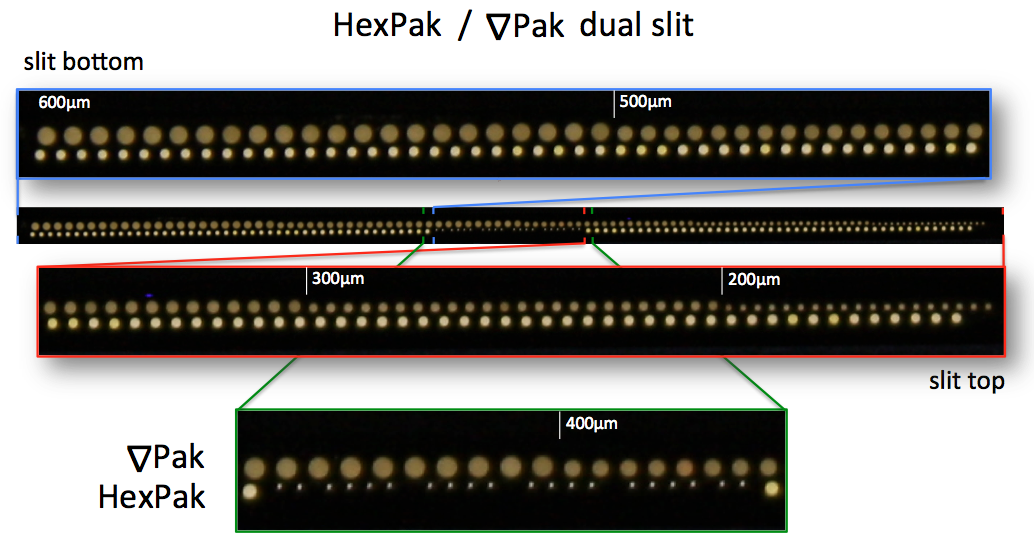
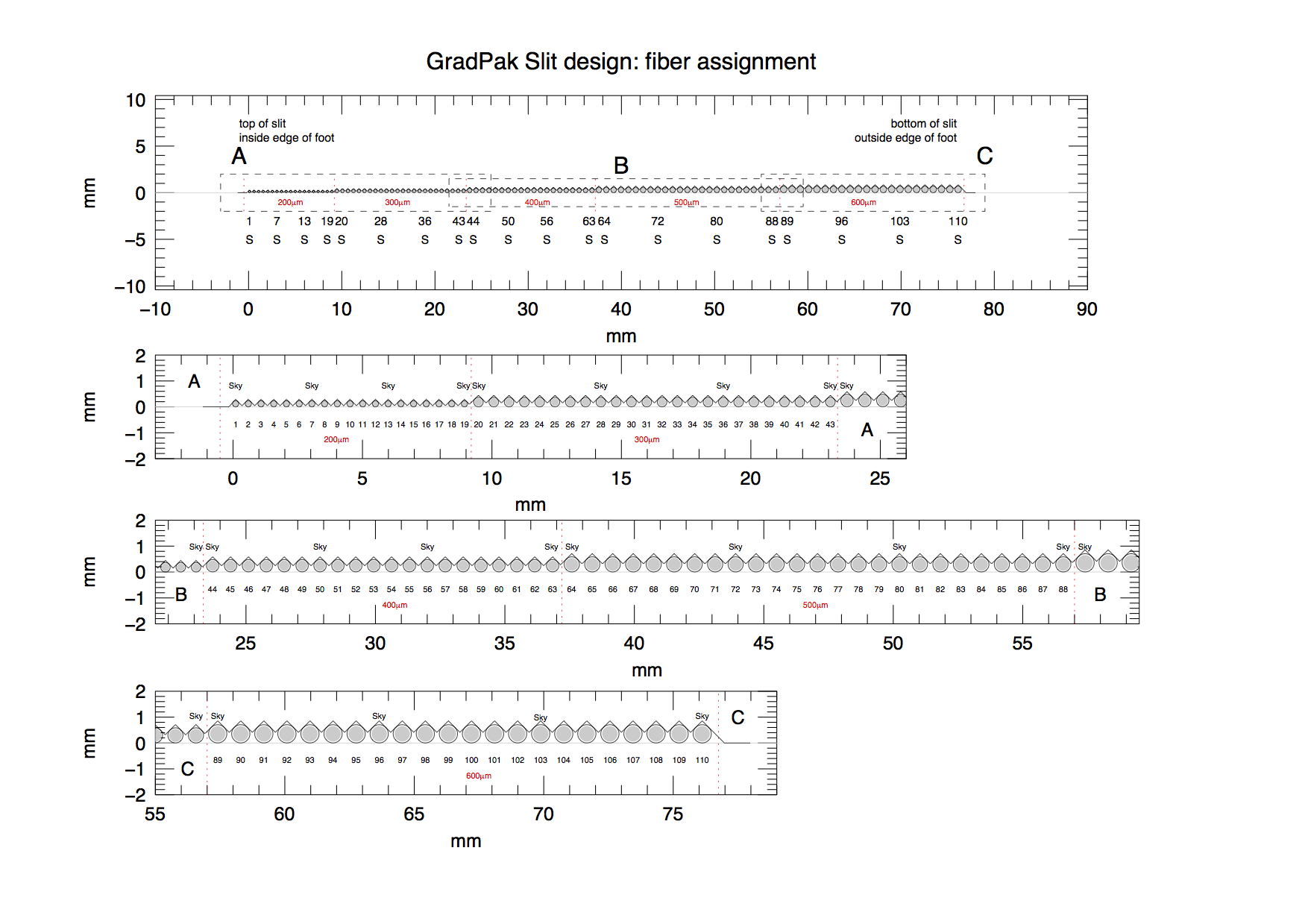
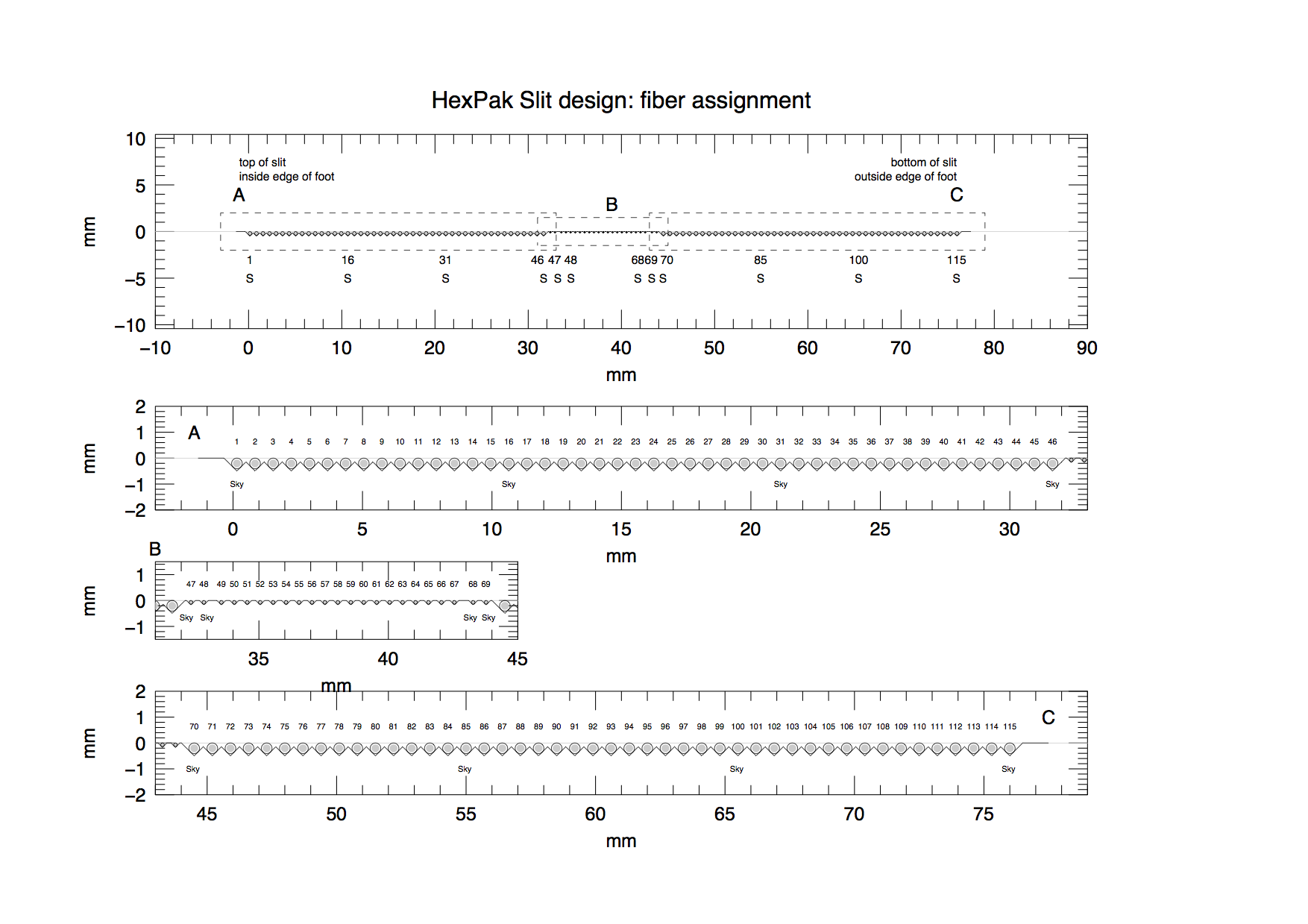
 Cable
bifurcation uses a beautiful argon-weld exhaust manifold
merge-collectors from SPD that splits from the large OD, 15m-length SS
flex-tube conduit feeding the spectrograph foot (slit) to two small
OD, 11m-length Al flex-tubes going to the two IFU heads. The junction
is shown in the image at right. Large flex-tube is epoxy-bonded to the
merge-collector OD, while the smaller flex-tubes are epoxy bonded to
the merge-collector ID, using standard automative adhesive.
Shrink-wrap is applied for strain-relief and protective sealant.
Cable
bifurcation uses a beautiful argon-weld exhaust manifold
merge-collectors from SPD that splits from the large OD, 15m-length SS
flex-tube conduit feeding the spectrograph foot (slit) to two small
OD, 11m-length Al flex-tubes going to the two IFU heads. The junction
is shown in the image at right. Large flex-tube is epoxy-bonded to the
merge-collector OD, while the smaller flex-tubes are epoxy bonded to
the merge-collector ID, using standard automative adhesive.
Shrink-wrap is applied for strain-relief and protective sealant.
